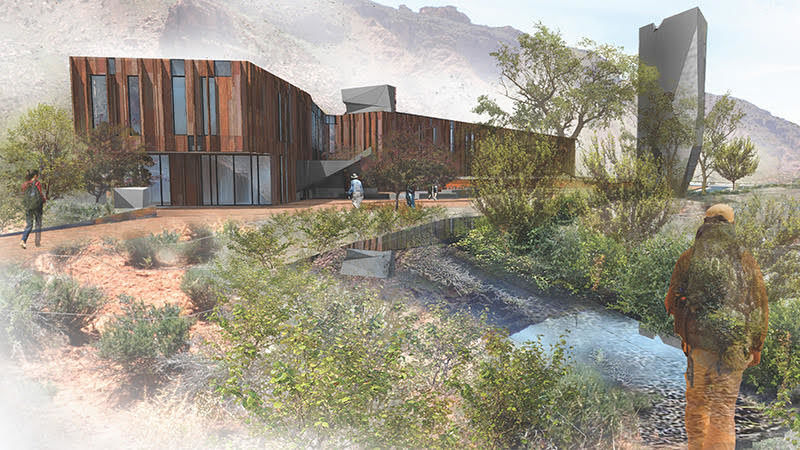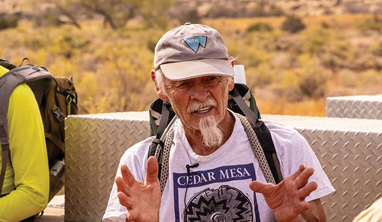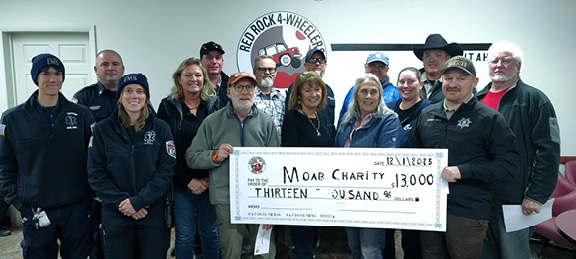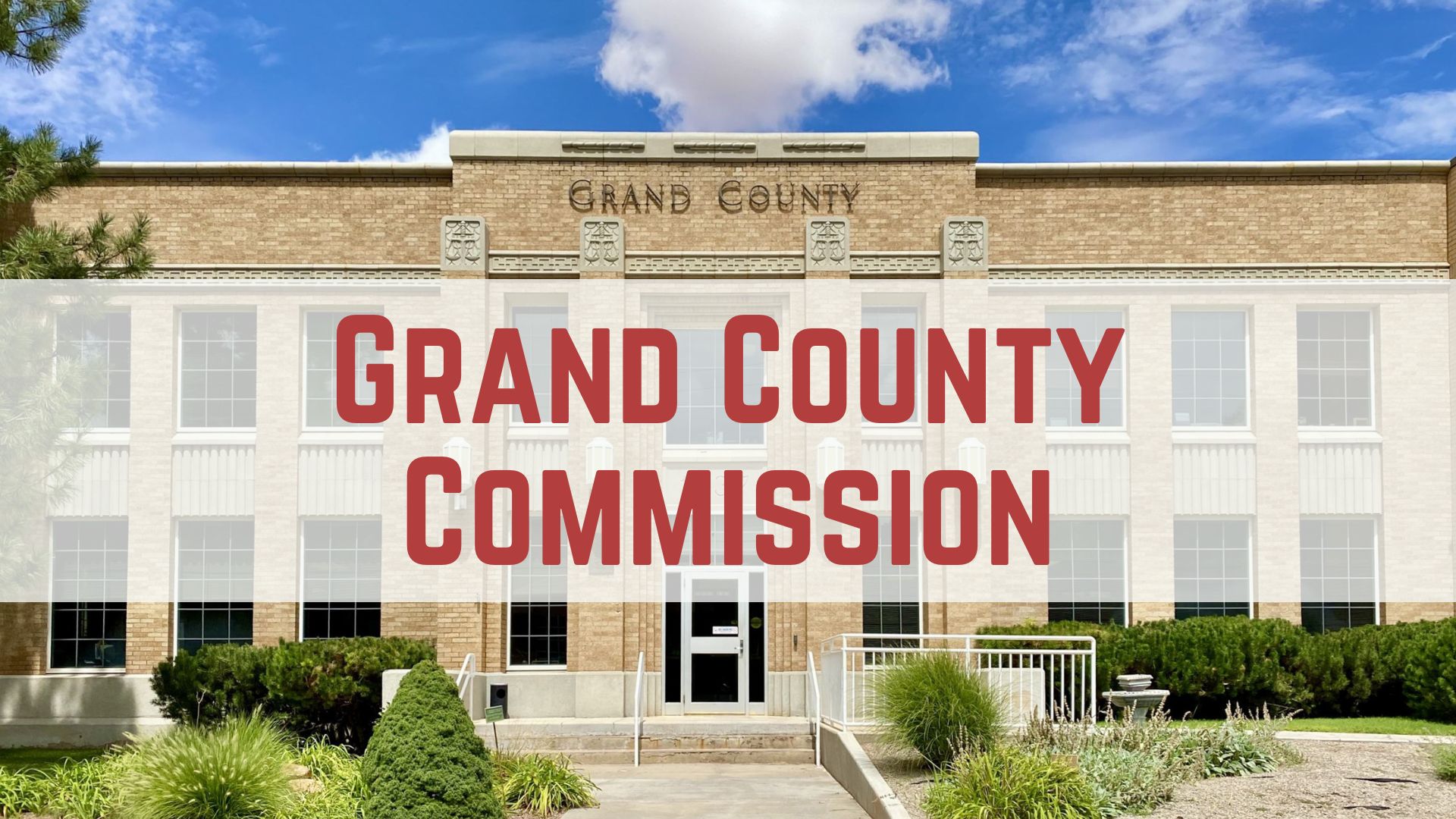Some information may be outdated.
Moab, can you spare $2 million — or more?
Utah State University-Moab is scaling back its previous $10 million plans for the first phase of a new campus, and school officials are turning to community leaders for their help in leading local fundraising efforts.
“Really, what we need is connections from you,” USU Vice President of Regional Campuses Dave Woolstenhulme told the Moab City Council during a special meeting on Friday, Aug. 31.
USU officials have committed additional funding for the project. But in the past, they had been seeking $5 million in community contributions for the new campus off South U.S. Highway 191, and Moab Mayor Emily Niehaus called a lower fundraising goal of $2 million a “big deal.”
“That’s a big shift in what the conversation … has been in terms of the Moab community’s effort to support the university coming, so it sounds like you responded to the sticker (shock) that maybe the community was feeling about raising $5 million,” Niehaus said. “Thank you for respecting that response and doing that research.”
Woolstenhulme said he believes the latest plans for the first phase of the campus can satisfy the same needs, while giving the school an opportunity to grow.
“We’re not building that building and thinking we’ll be out of it in five years,” he said. “We’re feeling like that can be a building that’s sustainable for many years. Will we need to eventually build on? Absolutely, absolutely. But it’ll be down the road quite a few years, we feel.”
Increasingly, he noted, many students no longer attend classes in actual classrooms, thanks to the continued growth of online learning programs. It’s reached the point, he said, that designs of new buildings at USU’s main campus in Logan are different than they were just five or 10 years ago.
“It’s just changing, the way education is being done,” Woolstenhulme said. “So even with growth, and even with a lot more students, the size and the impact of the physical plan is not what it used to be.”
USU DISTANCES ITSELF FROM DESTINATION CAMPUS VISION
Until last year, university officials had long promoted a vision of a new destination campus that attracted students from across the country and around the world.
But USU-Moab Executive Director Lianna Etchberger said the school now sees itself as a regional campus that takes care of the local community’s needs first. If it can bring in programs that generate tuition and build excitement about the school, she said, that’s a bonus.
Under the current vision for the new campus, Etchberger said the first phase of the project will “probably” have the capacity to serve somewhere between 250 and 300 students. Etchberger said that school officials made the decision to build a smaller building on a 40-acre site below the Moab Rim, with the potential to expand it in the future.
“We’re not really looking at ourselves as being initially in this first phase a destination campus, but hopefully, whatever new programs we might add on, it might be a destination program, where we can recruit for that particular program,” she said. “And if there’s anybody who wants to come — if there’s housing available — sure, we’d love to have students come and they can take their generals; they can (pursue) any of the degrees that we offer.”
Over the years, Moab City Council member Kalen Jones has repeatedly heard others refer to the new facility as a “destination campus,” and it’s a vision that he continues to support.
“I don’t know if that means recruiting nationwide, but it might mean capturing students that are looking for a different experience than a USU satellite campus offers,” he said.
Part of the goal in building a destination campus, Jones said, is to promote economic diversification in the community.
“It’s not just (university) training for having better-paid workers for the low-paying jobs that we have here,” he said. “But it’s actually perhaps having a university be a partner with an incubator to actually develop new businesses that will really accelerate the growth of existing ones in ways that (offer) better-paying jobs.”
Based on Etchberger’s remarks to the council, Jones questioned whether the school could still serve that role, adding that he believes there’s an “amorphous vision” of the project in the community.
Woolstenhulme noted that other USU campuses have boosted local economies elsewhere in the state, and he believes that USU-Moab could eventually follow suit.
“We can do that here; we will do that here,” he said. “There’s not a mandate in the legislature that says that we can’t make this into a destination campus when that opportunity comes, right? But I think the timing has to be right with the city; I think the timing has to be right with the university; I think we all have to be able to understand what we’re doing.”
Moving forward, Woolstenhulme said, the university can begin to identify programs that draw students to the community.
“But then to go out and recruit all across the country to bring students to Moab — that’s not where we’re going at this point,” he said. “Will we get there down the road (in) a few years? Maybe, but I think there’s going to have to be a lot of discussions, a lot of planning, a lot of infrastructure, a lot of things to do.”
Niehaus said the distinction between a regional campus and a destination campus is an important one to make. It has significant implications in terms of growth and the development of the surrounding area, she said, as well as educational programming at the university itself.
“What I’m hearing is that this is a regional campus, and not a destination campus,” Niehaus said. “And so … the economic development efforts are really surrounded around this idea of regional campus expectations.”
USU TO SEEK STATE FUNDING FOR NEW CAMPUS
Woolstenhulme said that university officials plan to approach state lawmakers during the upcoming legislative session and request about $1.5 million for a new Moab campus.
“No promises — you know how that works, but we feel very confident that we have some really good people that will support that,” he said.
However, if fundraising efforts don’t reach the university’s new goals within a reasonable amount of time, any state funding that’s been apportioned for the project could disappear.
“They are not going to give us $1.5 to $2 million or whatever it is and (say), ‘Take the next five years to figure this out,’” Woolstenhulme said. “So if we get that money, we’re going to have to perform, or else we’re eventually going to have the possibility of losing that money.”
It’s absolutely critical, as well, to secure legislative funding for long-term operational and maintenance expenses at the new campus, he said.
Overall, he said, university officials are starting to see a reduction in state appropriations for education, while student tuition increases.
“We’re working very hard as an institution that we don’t let that tuition get out of control,” he said. “We’re still very, very, very reasonable compared to our peers. In fact, we’re low, compared to our peers.”
Even so, he said, tuition may not be inexpensive for some students and their families, so the university will do everything it can to help out with scholarships and financial aid.
“It’s something that we’re very concerned with; it’s something we’re very happy to work with you with,” he said.
Once the new building in Moab has been constructed, he said, the school needs to focus on growing its scholarship program.
COUNCIL MEMBER CONCERNED ABOUT ADJACENT DEVELOPMENT
Moab City Council member Mike Duncan voiced support for the first phase of the campus itself. But he raised concerns about commercial housing and building on adjacent property that Utah’s School and Institutional Trust Lands Administration (SITLA) owns.
“I think there will probably be an incentive from a financial point of view to go ahead and get SITLA rolling so some tax revenue comes in, and those homes — with which we will have our agreements and disagreements with SITLA, I am sure — it’s the water efficiency and all of the infrastructure required with them that’s going to be the driver — not you guys,” Duncan said.
To learn more about the new campus and opportunities to donate, go to: https://www.usu.edu/campuses/moab/donate/
Officials envision regional facility for area students
“That’s a big shift in what the conversation … has been in terms of the Moab community’s effort to support the university coming, so it sounds like you responded to the sticker (shock) that maybe the community was feeling about raising $5 million.”
Appreciate the coverage? Help keep local news alive.
Chip in to support the Moab Sun News.





